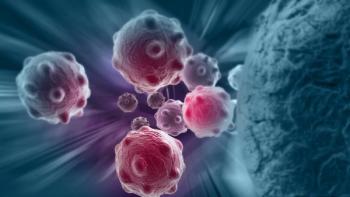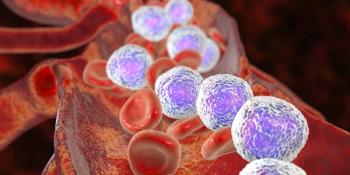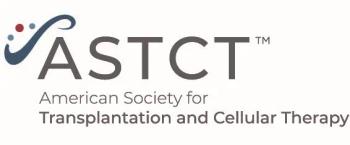
Pacritinib May Benefit Patients with Myelofibrosis and Thrombocytopenia
A recent phase III study revealed a benefit with pacritinib for patients with myelofibrosis and thrombocytopenia who have experienced treatment failure with previous therapies.
Pacritinib appears to have a clinical benefit in patients with myelofibrosis and thrombocytopenia, including those who have received prior JAK2 inhibitor therapy, according to a phase III randomized international multicenter. Findings from the PERSIST-2 study recently
Pacritinib, which is an oral JAK2/FLT inhibitor, could help fill an urgent unmet need for patients with myelofibrosis and thrombocytopenia or as a second-line treatment after ruxolitinib. “There is less myelosuppression with this drug. You can deliver this drug in patients with low platelets,” said study investigator John Mascarenhas, MD, associate professor of medicine, hematology, and medical oncology at The Tisch Cancer Institute, Icahn School of Medicine at Mount Sinai, New York, New York.
PERSIST-2 was a global phase III study that included 311 patients with myelofibrosis and platelet counts lower than 100,000. All the patients had palpable splenomegaly and systemic symptoms. Many of these patients had been previously treated with ruxolitinib or were ineligible for ruxolitinib due to limiting thrombocytopenia. The co-primary endpoint of this trial was percentage of treated subjects that attained both a spleen volume reduction of at least 35% assessed by imaging and 50% reduction in symptom burden at 24 weeks of therapy.
The patients received pacritinib 400-mg daily or 200-mg twice daily or best available therapy (BAT). The most common BAT was ruxolitinib (45%). The co-primary endpoint of spleen volume reduction and total symptom score reduction were measured at 24 weeks of therapy and patients could crossover to the study arm if a response was not achieved at this point.
The drug was found to be safe and effective and the dose of 200-mg twice daily. “We know 400 mg once daily is not the way to go,” Dr. Mascarenhas said in an interview with Cancer Network. “There was an advantage with 200 mg.”
The researchers found that pacritinib (arms combined) was more effective than BAT for ≥ 35% spleen volume reduction (18% vs. 3%; P = .001) and trended toward ≥ 50% reduction in total symptom score (25% vs. 14%; P = .079). Pacritinib twice daily led to significant improvements in both endpoints over BAT. Clinical improvement in hemoglobin and reduction in transfusion burden were greatest with pacritinib twice daily.
The most common (>10%) grade 3/4 adverse event was thrombocytopenia, which occurred in 31% of patients in the pacritinib once-daily group, 32% in the pacritinib twice-daily group, and 18% for the BAT group. Anemia occurred in 27% of the patients receiving once daily, in 22% of the patients receiving twice daily, and in 14% of patients on BAT.
The trial was halted by the U.S. Food and Drug Administration in February 2016 due to an interim analysis indicating excessive deaths due to cardiovascular and bleeding events with pacritinib treatment. However, the hold was later lifted and no deaths due to cardiovascular events or bleeding were seen in the full analysis of mature data.
Newsletter
Stay up to date on recent advances in the multidisciplinary approach to cancer.

















































































